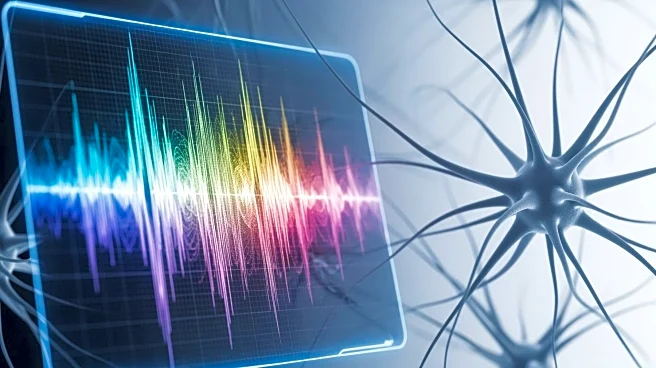What's Happening?
A new Chinese EEG dataset, CIRE, has been developed to decode speech intention modulated by prosodic emotion. The dataset includes EEG recordings from 38 Mandarin-speaking participants, capturing their
brain responses to speech stimuli with varying emotional tones. The study aims to understand how prosodic cues influence speech perception and intention recognition. Participants were exposed to sentences with literal and non-literal meanings, and their EEG data was analyzed to identify neural patterns associated with different speech intentions.
Why It's Important?
The CIRE dataset provides valuable insights into the neural mechanisms underlying speech perception and emotional modulation. This research has implications for improving communication technologies, such as speech recognition systems and assistive devices for individuals with communication disorders. By understanding how the brain processes emotional cues in speech, developers can create more intuitive and responsive systems. Additionally, the dataset contributes to the broader field of cognitive neuroscience, offering a resource for studying brain function and language processing.
What's Next?
Future research will focus on expanding the dataset to include more diverse speech stimuli and participant demographics. Collaboration with international research teams may enhance the dataset's applicability and facilitate cross-cultural studies on speech perception. The findings could inform the development of advanced speech recognition technologies and contribute to the creation of personalized communication aids.
Beyond the Headlines
The study raises ethical considerations regarding the use of EEG data and the potential for privacy concerns. Ensuring the responsible handling and sharing of data will be crucial to maintaining participant trust and compliance with ethical standards. The research also highlights the intersection of technology and neuroscience, prompting discussions on the future of human-machine interaction and the role of emotion in communication.











